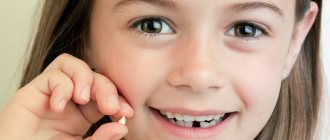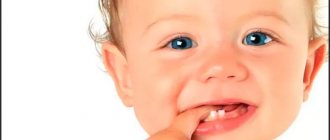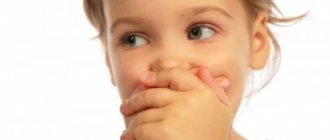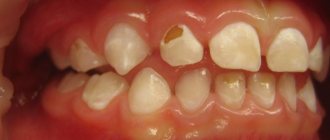There is an opinion that in the old days no one took much care in raising children. They say they grew like weeds in villages, on their own. But the abundance of traditions associated with the birth and upbringing of children suggests the opposite. Some of them we still use today, others are completely forgotten. Today people are awakening to an interest in their roots and traditions of their ancestors. Therefore, we will tell you about the most popular rituals associated with children.
What does “bring in the hem” mean?
Today the expression has a negative connotation. This is what they say when they want to emphasize a woman’s lifestyle. “I had enough of a child” - I gave birth to him outside of marriage.
And in the days of our grandmothers, little ones came to their home regularly in hemlines. Then there was no maternity leave from the 30th week of pregnancy; they worked until the baby was born. And given the advances in medicine at that time, no one knew exactly this date. Therefore, childbirth was found in a field, in a stable, and it was impossible to constantly carry diapers with you. Therefore, the child was carried home in a hem or in a headscarf.
What to do when baby teeth start falling out
First of all, this question concerns parents. In most cases there is not much to worry about here. For children, this is usually a completely painless process. The only thing that can bother the baby in this case is a loose tooth. And even then this is mainly a purely cognitive concern. Usually the child touches such a tooth with his finger, moves it with his tongue, tries to look at it in the mirror, etc. What should parents do at such a moment?
- Calm the child down and explain to him that there is nothing wrong with this, this is normal and does not hurt at all.
- Warn your child that there is no need to touch a loose tooth with your fingers, as an infection may get into the mouth, the gums will become swollen and begin to hurt.
- It happens that the loss of baby teeth is accompanied by some complications. For example, blood oozes from a wound on the gum, and the child experiences pain. What should parents do in this case?
- If blood is flowing from the wound, you need to give the child a piece of gauze or cotton wool, which he should put on the wound and hold for a while. Usually the blood soon stops flowing.
- Another way to stop the bleeding is to rinse the wound with a weak solution of baking soda. Of course, first the child needs to be explained how to do this correctly.
- But you cannot rinse your mouth with hydrogen peroxide. It will not help in any way, and will only cause irritation of the wound on the gum that has not yet healed, and along with it pain.
- By the way, you cannot give your baby painkillers and anti-inflammatory medications at this time. The pain should go away on its own, especially since in most cases it is not severe.
- In some cases, it happens that the bleeding does not stop, despite all the tricks and methods. In this case, the help of a dentist is necessary.
Other possible troubles
It often happens that a child swallows a lost tooth without noticing it.
In this case, there is no need to worry: it will not cause any harm to the baby. But if the baby tooth has not yet fallen out, but another, permanent tooth has already grown in its place, then it is necessary to take measures. Firstly, because it can be painful. Secondly, in this case, the new tooth will almost certainly grow incorrectly, curved and deformed, and subsequently a visit to the dental office will be necessary.
Therefore, the baby tooth needs to be removed as soon as possible. But you shouldn’t do it yourself, using all sorts of “grandmother’s” methods - for example, using thread and a door handle. In this way, you may not be able to pull out a tooth, but you can easily scare a child or cause him pain. It is better to let a specialist do this - a dentist.
If a child stubbornly refuses to go to the doctor (this often happens), then you can try some folk remedies. No, no, not the scary thread and door handle, but completely different ones! For example, let him chew crackers or some other hard foods. They very well loosen already loose baby teeth, and thus help them fall out. In general, children whose baby teeth are about to fall out should be given solid foods (crackers, carrots, apples) as often as possible. But, of course, don't tell them what it's for. Otherwise, they will get scared and refuse it. This video will also tell you what parents should do if their baby has lost a baby tooth.
Celebration of the first lost tooth
This is a wonderful, fun and magical holiday, and every reader, no doubt, is familiar with it in one way or another. By and large, this is not even a holiday, but a long-rooted folk tradition. Well, what's the difference? The main thing is that a child usually remembers such a moment for the rest of his life, as a happy part of his childhood.
There is no need to talk in detail about the essence of the holiday. It is much more important not to forget to arrange it for the child. And how exactly depends on the parental imagination and, of course, on folk legends.
You can throw a lost tooth under the stove or, if there is no stove, under the bathtub and ask the mouse, which, of course, lives there, to pick up the tooth and bring the baby another one in return - real, strong, bone, or even gold. Or you can ask the tooth fairy or another good wizard for the same thing in return for the mouse. And when a child’s new tooth grows, you must not forget to thank the mouse, fairy, or wizard for this. There is no child who would not love this holiday and will not remember it for the rest of his life. All adult readers, no doubt, remember him and warm their souls with these memories. Isn't it true?
Baptism
All children in Rus' were baptized, as this was considered a protective ritual. They were preparing for this event and considered it very important and significant. The midwife who delivered the baby prepared porridge, and it was called “Babkina porridge.” The godparents bought it, after which they divided a spoonful among all the participants in the event.
After this, it was time to “wash the hooves.” This meant drinking to the baby's health. Often, raising a glass, guests handed over their gifts and said parting words.
"Spoon for a tooth"
This was usually timed to coincide with the date of the christening. Moreover, if today it is customary to bring gifts to the baby, then before the main character of the holiday was the woman in labor. Presents were prepared for her. But, of course, most often these were things for caring for the baby. Since about 1940, the expression has been interpreted as an offering to a child. If there was such an opportunity (primarily financial), they tried to give silver items. There has always been a special attitude towards this metal; it warded off illnesses and cleansed the house with its presence. Hence the “silvering of a tooth.”
Why exactly a spoon? The fact is that before there were no individual plates; people ate from a common bowl. But everyone should have had a spoon, just like we have a toothbrush today.
A child’s first tooth is a holiday for everyone!
A child’s first tooth is one of the most anticipated events by parents in the life of a little toddler. And this is despite the unpleasant sensations that both the baby and his parents experience along with him.
Deadlines
When can we expect the first tooth? On average, according to the pediatrician's table, it should appear in the range of 4 to 8 months. True, there are cases when this happens both earlier and somewhat later; this already depends on the individual development of the child and the general condition of his body. By the way, although this is very rare, there are children who are already born with several teeth, which should not be too surprising. If the child still has no teeth by the end of the first year of life, you should consult a doctor.
Symptoms
Everyone knows that the appearance of a child’s first tooth is quite difficult and painful - with pain, an abundance of saliva and frequent whimpering. And although nature has taken care of natural pain relief, the baby can behave quite badly. The main symptom of the appearance of the first tooth is excessive salivation. But if a child starts drooling at three months, you should not think that teeth are on the way; at this age, glands are still forming, which fill the baby with saliva. And since the little one cannot swallow them all, they simply flow down his chin. The first tooth in a child can also simultaneously cause fever, a slight runny nose and other diseases, since during teething the child’s immunity decreases somewhat and he is more susceptible to various viruses and diseases.
Tables
There are approximate tables that describe the stage-by-stage appearance of teeth in children. But you shouldn’t get too attached to them, because, as already mentioned, each organism is individual, and not all kids will strictly follow the timing and stages of the appearance of a particular tooth. If the child’s central incisors were not the first to erupt, this is not a problem, the body just decided that it would be better this way.
Care
Young children's teeth need to be protected and cared for from the very beginning. The first tooth is already a signal that you need to buy a toothbrush. For such kids, it is not quite standard yet, more like a large elastic band, but it already performs its functions. In addition, by constantly chewing this brush, the child not only cleans his tooth, but also massages the gums, which is very useful when teething.
Tooth as a holiday
As already mentioned, a child’s first tooth is an event expected by parents, so it is not surprising if the mother wants to make a small celebration on this occasion. The traditions of different peoples associated with the appearance of teeth are also interesting. So, for example, in Bashkiria, every toddler has a dental father - this is necessarily a stranger who should be the first to see the baby’s tooth. In some villages in Georgia, a mother, having noticed the baby’s first tooth, must take the child out into a crowd of people, silently give it into the hands of those around her and wait until someone sees the child’s tooth. This person is then given bread specially prepared for this occasion. Almost no one remembers where this tradition came from and what it means, but if this is accepted, then women need to do this. And on the island of Sri Lanka, the appearance of the first tooth symbolizes that the baby has moved from infancy to childhood.
First haircut
Hair in Russian culture symbolized strength and connection with the energy of the earth. To cut them by force meant to deprive them of strength, to gain power over a person. Therefore, this ritual was performed only on certain dates. Our ancestors cut their hair only for a specific reason. The bride had her hair cut slightly, which meant the end of her girlhood. Echoes of traditions and childhood rituals that marked different stages of growing up have also survived to this day. The child had his hair cut for the first time when he was a year old. It was believed that if you cut the hair of a child under one year old, you can “cut the tongue.” That is, he may have problems with speech.
Nuances you need to know
When does the first baby tooth fall out in children? As a rule, this process begins at 5-6 years. But it may be earlier or later - at the age of four, seven or even eight. Here, a lot depends on the developmental characteristics of the child, which, as you know, are different for everyone. These features include, but are not limited to:
- how healthy the baby’s baby teeth are (sick teeth usually start falling out earlier);
- when they began to erupt (teeth that erupted earlier fall out earlier);
- what are the features of the formation and development of the jaw apparatus in a baby.
Which baby teeth fall out first in children?
Although, as already mentioned, the schedule for the loss of baby teeth is different for each child, they fall out in the same sequence - that is, in the same order as they grew up. First, the lower incisors begin to loosen and fall out. Then - the upper incisors. Then other teeth become loose and fall out, and the order is arbitrary. Lastly, it comes to the canines, premolars and molars. This process is completely completed, again, differently for each child. But on average - about 12-13 years. A full-fledged bite begins to form at 13-14 years of age.










